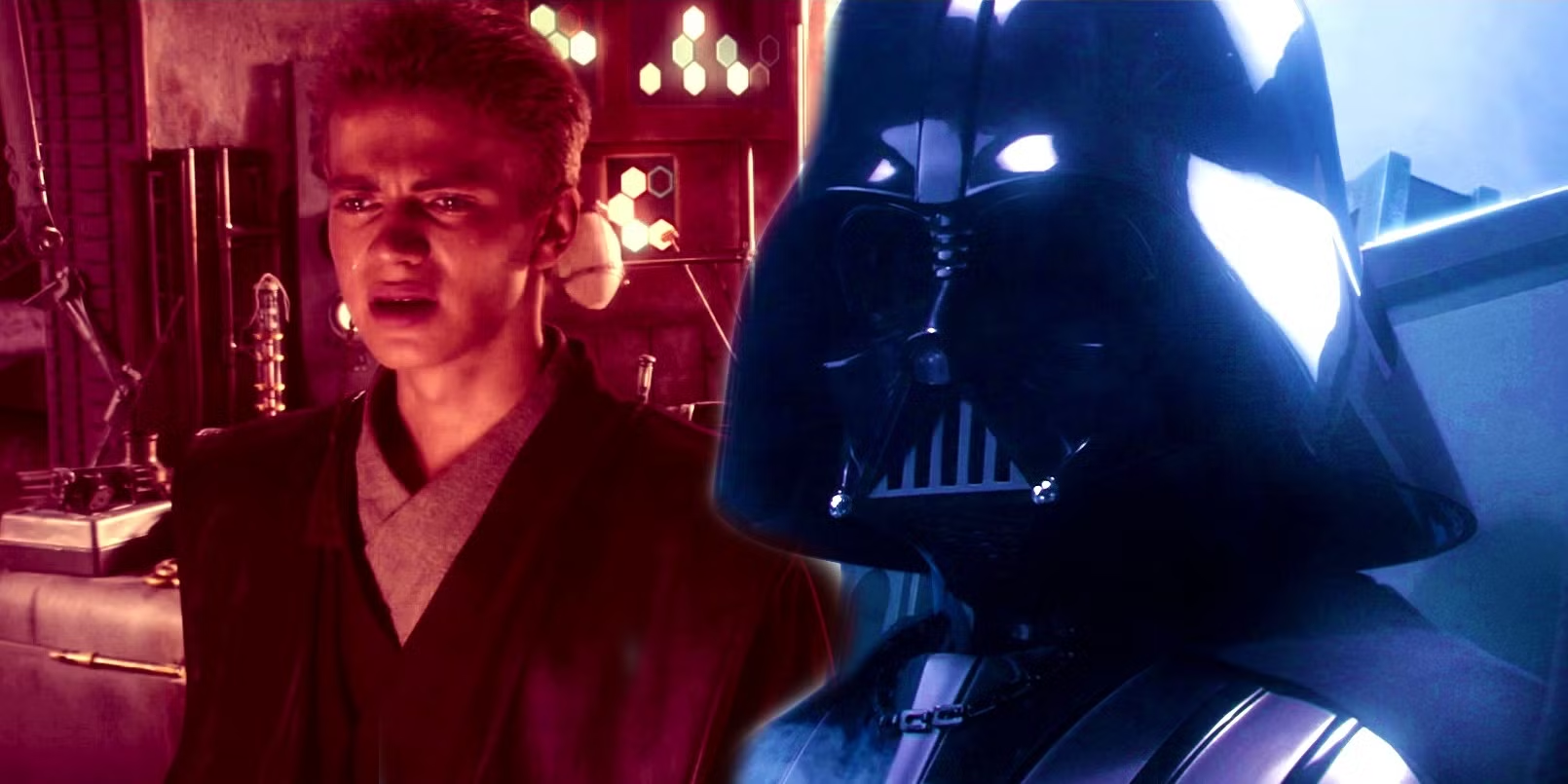Star Wars Proves The Sith Had More To Fear From Attachment Than The Jedi Ever Did

Warning! This post contains spoilers for The Acolyte.
Summary
- The Acolyte confirms that attachments can negatively impact the Sith.
- Star Wars has shown how attachments can lead to redemption, with characters like Darth Vader and Kylo Ren being saved by love.
- Both Jedi and Sith failed to effectively use attachments to their advantage.
Star Wars has proven in Star Wars: The Acolyte that the Jedi’s greatest fear was much more dangerous for the Sith all along. The Acolyte is set 100 years before Star Wars: Episode I – The Phantom Menace in the Star Wars timeline and was therefore primed to reveal brand-new insights about the Jedi, the Sith, and the Republic. In its first five episodes, the show has already done so to a certain degree, with The Acolyte episode 5 in particular including a number of shocking twists.
However, The Acolyte has also incorporated myriad themes and patterns seen throughout Star Wars movies and TV shows, reflecting the “rhymes” for which the franchise is known. One recurring theme in particular is the importance and impact of attachments, an issue that has been front and center since the prequel trilogy. Intriguingly, though, while the prequels demonstrated how harmful attachments can be to the Jedi, The Acolyte suggests it was the Sith who should have been worried after all.
Related
The Acolyte Episode 5 Confirmed A Harsh Reality About The Jedi
The Acolyte episode 5 was absolutely devastating for the Jedi, but their greatest blow didn’t come from the Stranger, it may be self-inflicted.
Two Major Star Wars Villains Abandoned The Dark Side Because Of Attachments
Anakin Skywalker/Darth Vader
Prior to The Acolyte, Star Wars had already made clear that attachments can be to the Jedi’s advantage. In fact, this arc was precisely the story of the original Star Wars trilogy. Despite Darth Vader being one of Star Wars’ most powerful Sith and an incredibly evil man, he was saved and restored to the light out of love for his son. It was specifically Vader’s attachment to Luke that redeemed him.
It was specifically Vader’s attachment to Luke that redeemed him.
Although this was the backdrop for the prequel trilogy, The Phantom Menace took a sharp left turn, with the Jedi Council initially rejecting Anakin as a potential Jedi because of his attachment to his mother. Yoda in particular voiced concerns about Anakin loving and missing his mother pulling him toward the dark side. Star Wars: Episode II – Attack of the Clones and Star Wars: Episode III – Revenge of the Sith then doubled down on this view of attachments.
In Attack of the Clones, Anakin fell in precisely the way Yoda anticipated, letting his grief over his mother consume him so much that he murdered an entire Tusken Raider camp of men, women, and children. While this would have been bad enough, Anakin’s transition to Darth Vader became complete in Revenge of the Sith when Anakin was so distraught at the idea of losing Padmé that he betrayed all of his values and slaughtered countless innocents. Clearly, the prequels had a very different, much more negative take on Jedi attachments.

Related
All 15 Defining Moments In Anakin Skywalker’s Fall To The Dark Side
Anakin Skywalker’s fall to the dark side of the Force is a pivotal event in Star Wars, and 15 key moments defined how that turn happened over time.
Yet, the sequel trilogy seemingly swung back around on the benefits attachments and love can have. Like Darth Vader’s arc in the original trilogy, in the sequels, Kylo Ren/Ben Solo is redeemed entirely out of love. On the one hand, this is the case because his mother, Leia, gave her life to bring him back to the light. Ben even sees a vision (or, really, a memory) of his father, Han Solo, at that moment, which further sways him to the light.
Ben Solo/Kylo Ren
- Alliance
- Jedi, First Order
However, Ben also ultimately sacrifices his life for Rey out of his attachment to her, meaning not only that attachment saved Ben from the dark side but also that it saved Rey’s life. The damage attachment can do to the Jedi can’t be ignored, as Anakin did prove the Jedi Council right by falling to the dark side because his attachments led to a fear of loss. Even so, it’s clear that the Sith also suffered due to attachments, as they lost two of the most significant dark side Force-users to love.
The Sith also suffered due to attachments.
Mae Has Now Continued This Pattern
Mae
- Created By
- Leslye Headland
- Cast
- Amandla Stenberg
- Alliance
- Jedi
Now, in The Acolyte, Mae is repeating the pattern that Darth Vader/Anakin Skywalker and Kylo Ren/Ben Solo began. Specifically, just as Kylo Ren and Darth Vader each betrayed their masters to save someone they loved—with Kylo Ren killing Snoke for Rey and Darth Vader killing Palpatine for Luke—Mae walked away from her own master out of love for her sister. Thus far, for Mae, this hasn’t been such a radical shift, at least compared to Darth Vader.
When Darth Vader chose Luke over Palpatine, he fully returned to the light side of the Force. Mae’s decision in The Acolyte hasn’t had such a drastic impact, at least not yet. She still seems firmly on the dark side; however, Mae’s willingness to abandon her master for her sister makes it clear how damaging attachments can be to the Sith. While the Jedi were worried that attachments would draw Jedi to the dark, as was the case with Anakin, in truth, attachments and love seem equally likely to pull someone back to the light.
Attachments and love seem equally likely to pull someone back to the light.
Neither The Sith Nor The Jedi Effectively Dealt With Attachments
Ultimately, both the Jedi and the Sith failed to properly use attachments to their advantage or effectively account for the risks love and attachment can pose. For the Jedi, their concerns about the pitfalls of attachments overshadowed any thought of the benefits attachment and love can bring. Clearly, love and attachment can be powerful enough to turn even a Sith Lord back toward the light—a fact which, presumably, could have been of great help to the Jedi.
Instead, as seen in Revenge of the Sith, the Jedi treated attachment as something to fear. This was evident when Anakin sought guidance from Yoda, telling him that he was having nightmares about someone he cared for dying. Rather than truly listen to what Anakin was saying, Yoda reminded Anakin (as he had so many years before in The Phantom Menace) that a fear of loss can lead to the dark side. This treatment of attachment and love as something solely to be feared and avoided was a glaring failure on the part of the Jedi.
This treatment of attachment and love as something solely to be feared and avoided was a glaring failure on the part of the Jedi.
The reverse is true for the Sith. As Palpatine demonstrated in Revenge of the Sith, the Sith exploited the very dangers of attachments the Jedi feared in order to turn someone to the dark side. In Anakin’s case, this meant Palpatine weaponizing Anakin’s love for Padmé and fear of losing her to manipulate him to the point that he was willing to betray everything he believed in just to save her. While this clearly worked quite well, the Sith, like the Jedi, had one massive oversight.
Yes, Palpatine used the negative aspects of attachments to his advantage, but he failed to account for the potential for attachment and love to restore someone to the light side. While it seems unlikely Palpatine knew about the twins, as he surely would have hunted them down, he clearly had no contingency plan for Anakin/Darth Vader encountering someone he loved. Like the Jedi, Palpatine saw attachments only from his own angle, and in the end, it cost him his Empire.
It remains to be seen exactly how The Acolyte will handle this new example of attachment in Star Wars. Mae’s attachment to Osha isn’t so cut-and-dry, as Osha still believes Mae killed their entire family, and the truth isn’t yet clear. Regardless, Mae’s willingness to betray her master for the sake of her sister in Star Wars: The Acolyte makes it clear that, perhaps even more than the Jedi, the Sith should have been much warier of love and attachments than they were.
New episodes of The Acolyte release on Tuesdays at 9 PM EST/6 PM PST on Disney+.








